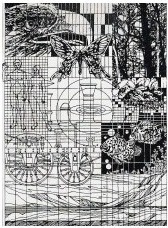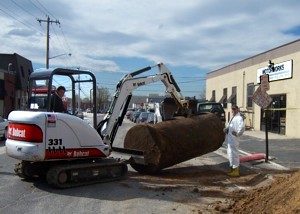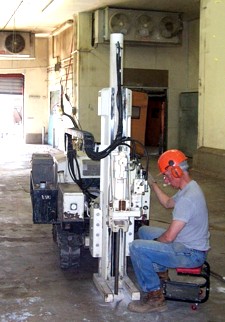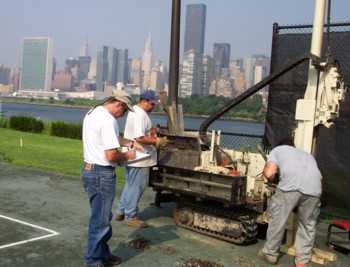
An Electronic Newsletter
EEA, Inc.
additional New York offices:
e-mail addresses:
Individual:
EEA services include
Visit our web site at http://www.eeaconsultants.com/ For information or
Phase I ESAs
Phase II/III Haz-Mat
Dredge Management Testing Jeffrey Shelkey EAS/EIS Studies
Wetlands Studies and
Marine Ecology
Terrestrial Ecology
Air Quality and Noise
Power Plants-Water Permitting Environmental Management Systems
(ISO 14000)
EEA, Inc. -
Principals
Allen Serper,
M.S., P.E.
Roy R. Stoecker,
Ph.D.
|

INDUSTRIAL PROPERTIES – New York's New Push to Get Results (printer friendly version uses Acrobat Reader) 2003 Brownfield Legislation The State Legislature passed legislation (September 2003) establishing a statutory Brownfield Cleanup Program for hazardous waste and petroleum contaminated sites and refinancing the State's hazardous waste superfund. The goals are to revitalize thousands of Brownfield sites and to create new businesses by establishing clear standards for Brownfield cleanup, economic incentives and liability relief. The legis- lation also refinanced the State Superfund Program ($120 million) for the investigation and remediation of contaminated properties and state costs for cleaning up off site contamination under the Voluntary Cleanup Program.
The major elements of the new statute are:
The NYSDEC can issue grants to Not-for-Profit groups to conduct Brownfield assessments, and pre-nomination studies of sites to participate in the Brownfield Program.
The NYSDEC will be developing “a Multi-track approach or standards for the remediation of contamination.” Regulations will be developed establishing generic tables of contaminant specific remedial action objectives for soil, based on a site’s current, intended or reasonably anticipated future use including unrestricted, commercial and industrial uses. There are many other details regarding the new Brownfield Program that can be found on the web at the New York State Legislature; enter S5702. Phase I Environmental
Site Assessments Phase II Testing and Phase III Remediation or Cleanup
Standard protocols (ASTM, state, etc.) provide guidance; however, experienced professionals are essential to insure a reliable program is performed. EEA has been performing Phase II/III hazmat testing and remediation programs for over fifteen years – ranging from underground leaking tanks to large industrial complexes, including the former Phelps Dodge Copper Refinery site in Queens (for NYCDEP). For sites that have contamination levels that require remediation, EEA's staff of certified professional geologists, professional engineers and remediation specialists employ innovative cleanup techniques, including:
... as well as the more common technique of excavating and removal of contaminated soils. Some Cleanup Projects Take Extended Periods to Complete EEA recently completed a soil
and groundwater remediation program at a dry cleaning and laundry facility
located on the south
EEA assisted the property owner's attorneys in negotiating a consent order (cleanup plan) that was acceptable to the buyer, seller and NYSDEC. EEA implemented the work plan which included closure of the sanitary leaching pools and connection to the sanitary sewer system in the street, installation of numerous groundwater monitoring wells to delineate and monitor the solvent plume, and then the design and installation of a soil vapor extraction and air sparging system appropriately sized to remediate the contamination on site. The first phase of the project was source removal, which involved excavation and disposal of the most elevated concentrations of contaminated soils and sludges in the sanitary system. EEA then excavated a series of trenches and installed several soil vapor extraction wells on the property, to capture and recover the chlorinated solvents trapped in the subsurface soils. Additionally, two sparging (air injection) wells were installed near the source area, below the groundwater table. The entire system was inspected by the NYSDEC and approved for operation. The system was initially run in the soil vapor extraction mode to remove the solvents trapped in the soil pore spaces. When routine analytical testing showed a significant drop in contaminants, the air sparging system was started and operated with the soil vapor extraction system. The system was run for approximately eighteen months until routine confirmation testing and NYSDEC approval allowed the system to be turned off and dismantled. |
|
10/16/03


 Soil gas venting
Soil gas venting